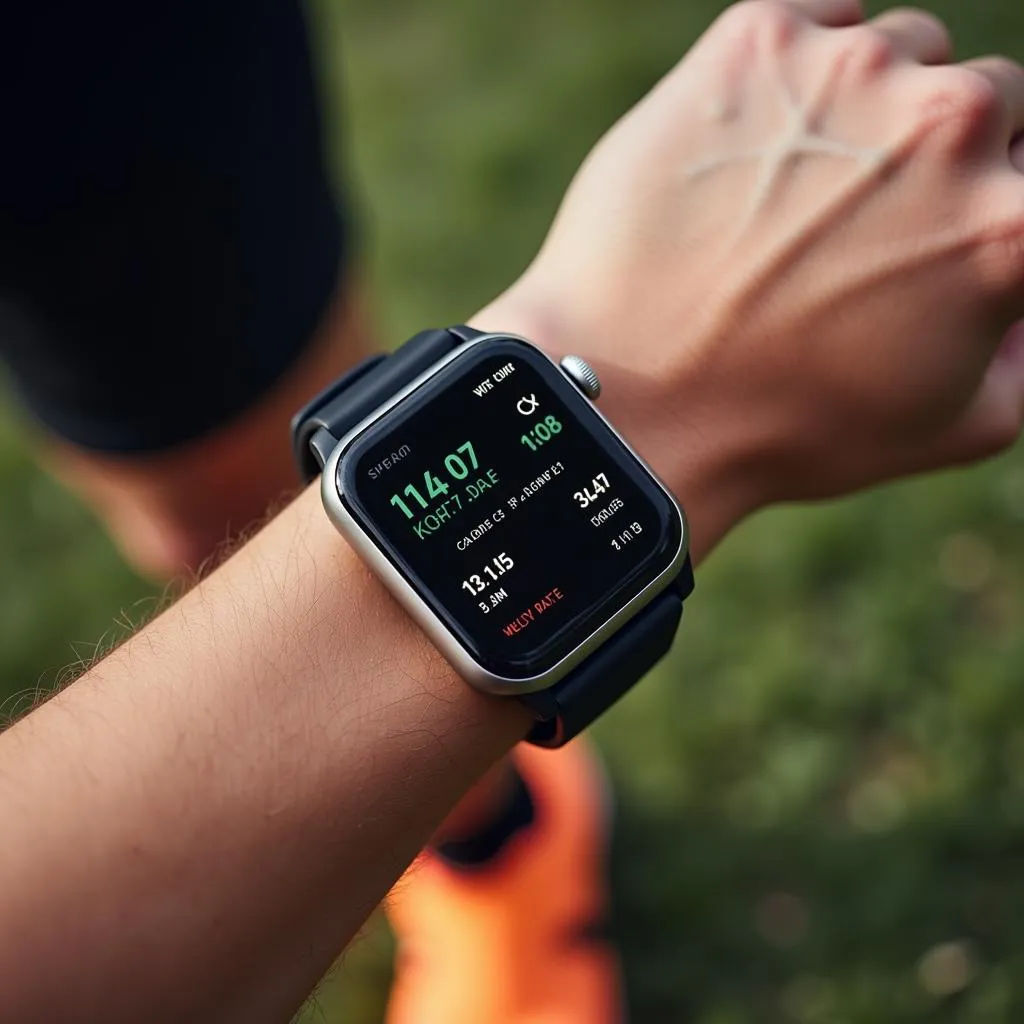The topic of describing a sports activity for fitness is a common one in IELTS Speaking tests. It has appeared frequently in past exams and is likely to continue being a popular subject for examiners. This article will guide you through answering questions related to this topic effectively, providing sample answers for different band scores.
Nội dung bài viết
- Part 1: Introduction and Interview
- Question: Do you enjoy doing sports?
- Question: What kind of exercise do you do to stay fit?
- Part 2: Long Turn
- Cue Card
- Follow-up Questions
- Part 3: Two-way Discussion
- Question: How do you think technology has changed the way people exercise?
- Question: Do you think governments should do more to encourage people to exercise?
- Key Vocabulary and Phrases for High Scores
- Examiner’s Advice
Part 1: Introduction and Interview
In this section, the examiner may ask you some general questions about sports and fitness. Here are some common questions with sample answers:
Question: Do you enjoy doing sports?
Band 6-7 Answer:
Yes, I do enjoy sports. I find them fun and good for my health. I try to play basketball or go jogging a few times a week.
Band 8-9 Answer:
Absolutely! I’m quite passionate about sports. Not only do they provide an excellent workout, but they also help me unwind and socialize. I particularly enjoy team sports like basketball, which I play religiously twice a week.
Question: What kind of exercise do you do to stay fit?
Band 6-7 Answer:
To stay fit, I usually go jogging in the park near my house. I try to do this three times a week, usually in the evenings after work.
Band 8-9 Answer:
To maintain my fitness level, I’ve adopted a well-rounded exercise routine. It primarily consists of high-intensity interval training (HIIT) workouts, which I do three times a week. Additionally, I complement this with yoga sessions twice a week to improve flexibility and mental well-being.
Describe a park where you go to exercise regularly can be an excellent way to showcase your vocabulary and fluency in describing locations and activities.
Part 2: Long Turn
Cue Card
Describe a sports activity you do to stay fit
You should say:
- What the activity is
- How often you do it
- Where you do it
- And explain why you choose this activity to stay fit
Band 6-7 Answer:
The sports activity I do to stay fit is jogging. I usually go jogging three times a week, typically in the evenings after work. I do it in a park near my house. It’s a nice park with a good jogging track.
I choose jogging because it’s easy to do and doesn’t require any special equipment. It’s also a good way to get some fresh air and clear my mind after a long day at work. Jogging helps me stay fit and healthy, and I feel more energetic when I do it regularly.
Band 8-9 Answer:
The sports activity I religiously engage in to maintain my fitness is high-intensity interval training, or HIIT for short. I diligently perform these workouts three times a week, usually early in the morning before starting my day. I typically do these sessions at a local gym that’s conveniently located just a stone’s throw from my residence.
I’ve gravitated towards HIIT for several compelling reasons. Firstly, it’s incredibly time-efficient, allowing me to get a full-body workout in just 30 minutes. This is particularly advantageous given my hectic schedule. Secondly, HIIT is remarkably versatile, enabling me to constantly vary my routines and thus prevent boredom or plateaus in my fitness journey.
Moreover, HIIT has been scientifically proven to be highly effective in burning calories, boosting metabolism, and improving cardiovascular health. I’ve personally experienced these benefits, noticing a significant enhancement in my stamina and overall energy levels since I started this regimen.
Lastly, I find HIIT to be mentally invigorating. The intense bursts of activity followed by short rest periods create a sort of meditative state, allowing me to clear my mind and start each day with renewed focus and determination.
 High-intensity interval training session in a gym
High-intensity interval training session in a gym
Follow-up Questions
- How has this activity improved your fitness?
Band 6-7 Answer:
HIIT has really helped improve my fitness. I feel stronger and have more energy now. My stamina has also gotten better, and I can do more intense workouts than before.
Band 8-9 Answer:
HIIT has substantially enhanced my overall fitness level. I’ve noticed a marked improvement in my cardiovascular endurance, evidenced by my ability to sustain high-intensity activities for longer periods. Additionally, my muscular strength and tone have noticeably improved, and I’ve experienced a significant boost in my metabolic rate, leading to more efficient fat burning even when I’m at rest.
- Would you recommend this activity to others?
Band 6-7 Answer:
Yes, I would recommend HIIT to others. It’s a great way to get fit quickly and doesn’t take too much time. But it can be tough, so people should start slowly and maybe talk to a doctor first.
Band 8-9 Answer:
I would wholeheartedly recommend HIIT to others, but with some caveats. It’s an exceptionally effective method for improving fitness and can be tailored to various fitness levels. However, I would strongly advise beginners to start with lower-intensity versions and gradually increase the difficulty. It’s also crucial to maintain proper form to avoid injuries, so I’d suggest working with a qualified trainer initially. Lastly, as with any intense exercise regimen, it’s prudent to consult a healthcare professional before starting, especially for those with pre-existing health conditions.
Part 3: Two-way Discussion
Question: How do you think technology has changed the way people exercise?
Band 6-7 Answer:
Technology has made exercising easier and more fun. People can use apps to track their workouts and fitness watches to monitor their heart rate. There are also online fitness classes that people can join from home. These things help motivate people to exercise more.
Band 8-9 Answer:
Technology has revolutionized the fitness landscape in numerous ways. Wearable devices like smartwatches and fitness trackers have empowered individuals to meticulously monitor various health metrics, from heart rate to sleep quality, providing unprecedented insights into their overall well-being.
Moreover, the proliferation of fitness apps has made personalized workout plans and expert guidance accessible to the masses, democratizing fitness knowledge that was once the domain of professional trainers. These apps often incorporate gamification elements, turning exercise into an engaging, competitive experience that boosts motivation.
The rise of virtual and augmented reality technologies has also transformed home workouts, creating immersive experiences that can simulate outdoor runs or group classes, mitigating the monotony often associated with exercising alone at home.
However, it’s worth noting that this technological integration isn’t without its drawbacks. The constant quantification of exercise can lead to an unhealthy obsession with numbers for some individuals, potentially overshadowing the intrinsic benefits of physical activity. Additionally, the reliance on technology might detract from the mindfulness aspect of exercise, which many find crucial for stress relief and mental well-being.
 Person using fitness app on smartwatch
Person using fitness app on smartwatch
Describe an outdoor sport you want to try in the future could be an interesting topic to explore when discussing the impact of technology on exercise and sports.
Question: Do you think governments should do more to encourage people to exercise?
Band 6-7 Answer:
Yes, I think governments should do more to encourage exercise. They could build more parks and sports facilities, and maybe offer free fitness classes. They could also run campaigns to teach people about the benefits of exercise. This would help people be healthier and reduce healthcare costs.
Band 8-9 Answer:
I firmly believe that governments have a crucial role to play in promoting physical activity among citizens. The sedentary lifestyle prevalent in many societies today poses a significant public health risk, and governmental intervention could be instrumental in mitigating this issue.
Governments could implement a multi-faceted approach to encourage exercise. This might include investing in infrastructure such as bike lanes, public parks, and community sports centers, making physical activity more accessible and appealing to the general public. They could also introduce policies that incentivize businesses to promote employee wellness programs or offer tax breaks for gym memberships.
Moreover, governments are in a unique position to leverage the education system to instill the importance of regular physical activity from a young age. Implementing comprehensive physical education programs in schools and integrating health and fitness education into the curriculum could foster lifelong healthy habits.
Public awareness campaigns, spearheaded by governments, could effectively disseminate information about the myriad benefits of exercise, not just for physical health but also for mental well-being and cognitive function. Such campaigns could potentially counteract the often misleading messages propagated by the fast food and sedentary entertainment industries.
However, it’s important to note that governmental efforts should be balanced and non-intrusive. The goal should be to create an environment conducive to physical activity and provide ample opportunities for exercise, rather than mandating specific behaviors. This approach respects individual autonomy while still promoting public health.
Key Vocabulary and Phrases for High Scores
-
Religiously (adverb) /rɪˈlɪdʒəsli/: With consistent and conscientious regularity.
Example: I religiously go to the gym three times a week. -
High-intensity interval training (HIIT) (noun) /haɪ ɪnˈtensəti ˈɪntəvəl ˈtreɪnɪŋ/: A form of cardiovascular exercise alternating short periods of intense anaerobic exercise with less intense recovery periods.
Example: HIIT has become increasingly popular due to its efficiency in burning calories. -
Time-efficient (adjective) /taɪm ɪˈfɪʃənt/: Making good use of time; not wasting time.
Example: HIIT is a time-efficient workout method for busy professionals. -
Versatile (adjective) /ˈvɜːrsətaɪl/: Able to adapt or be adapted to many different functions or activities.
Example: The versatility of HIIT allows for a wide range of exercises to be incorporated. -
Enhancement (noun) /ɪnˈhænsmənt/: An increase or improvement in quality, value, or extent.
Example: Regular exercise leads to an enhancement in overall health and well-being.
Describe an activity you do to keep fit can be a great opportunity to use these vocabulary items in context.
Examiner’s Advice
To achieve a high score in the IELTS Speaking test when discussing sports activities for fitness:
- Use a wide range of vocabulary related to sports and fitness. Don’t just stick to basic terms.
- Provide detailed explanations and examples to support your points.
- Use complex sentence structures and idiomatic expressions where appropriate.
- Show enthusiasm and fluency when speaking about your chosen activity.
- Be prepared to discuss broader issues related to fitness and health in Part 3.
- Practice describing your fitness routine regularly to improve your fluency and confidence.
Remember, the key to success in IELTS Speaking is not just about what you say, but how you say it. Aim for clarity, fluency, and natural delivery in your responses.
 IELTS Speaking test in progress
IELTS Speaking test in progress
Describe a place in your city you like could be an interesting way to incorporate discussion about fitness facilities or outdoor spaces used for exercise in your city.
By following these guidelines and practicing regularly, you can improve your chances of achieving a high score in the IELTS Speaking test when discussing sports activities for fitness. Remember to stay calm, speak naturally, and showcase your English language skills to the best of your ability.


